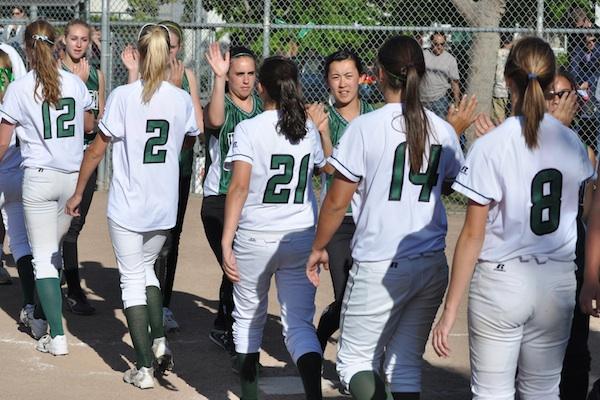Imagine that your football team was beaten 26-0. You are bruised, battered, and in a horrible mood after being shut out and humiliated during the loss. You wearily trudge over to exchange the traditional, half-hearted postgame handshakes with the other team, thinking nothing of the common ritual. Suddenly, however, after shaking hands with one of your opponents, you feel a sharp pain shooting through your hand and look down to find a fresh puncture wound on your palm. Adding insult to the injury of the loss, you realize that the player has a tack under his glove, and is now heading down the line stabbing your teammates one by one.
Sound like an unpleasant hypothetical situation? Absolutely. Unfortunately, this event actually happened this fall at a high school football game in Ohio on Sept. 30. When McClain High School met Washington High School in Greenfield, Ohio, Washington came away with a win. After the game, a Washington player who did not even play went through the handshake line with a tack in his glove. He managed to injure 28 McClain players before they realized what was going on, forcing each victim to go get a tetanus shot afterward.
The player has since admitted his guilt and been sentenced to 28 days in a juvenile detention center.
Paly football player Alec Furrier (‘13) would be disturbed to hear of anybody doing that, regardless of who they were.
“I feel like that was very immature,” Furrier said. “I would obviously be very angered and upset about that, even if it was a teammate.”
Thankfully, events of that severity are not common, but nevertheless it brings up the touchy issue of sportsmanship in high school athletics.
Unfortunately, sportsmanship tends to only become an issue in the negative sense, with stories of bad sportsmanship popping up much more frequently than stories of good sportsmanship. That is the nature of the beast, since basic displays of sportsmanship, like postgame handshakes, have become so common and widespread that they are frequently taken for granted. This shows a promising step, but despite kids being taught good sportsmanship at a young age, bad sportsmanship remains a problem.
As good athletes learn, poor sportsmanship is deplorable for many reasons, including disrespect, ruined reputations and potential harm not just to the poor sport, but to teammates and opponents as well.
Naturally, different sports have sportsmanship rituals as diverse as the games themselves, ranging from high school basketball players shaking hands with opposing coaches before games to professional soccer players exchanging jerseys after. Under the surface, however, common themes emerge in many of these displays.
The consensus among Paly athletes seems to be that above all, good sportsmanship keeps athletic competitions from developing into anything too serious.
Varsity volleyball player Becca Raffel (‘14) offers an explanation of bad sportsmanship, which she views as a lack of respect on the part of the poor sport.
“A bad sport is someone who behaves disrespectfully towards other players, coaches, teammates, fans or referees,” Raffel said. “I think they behave like this because it is human nature to look for someone to blame when something goes wrong.”
She remembers seeing some of this frustration from Marymount fans after the recent State Championship volleyball game when the Lady Vikes triumphed.
“After we won, the whole group of [Marymount fans] behind the bench ripped one of our warm-up shirts in half,” she said.
Although it may be human nature for athletes and spectators to get frustrated when things do not go their way, Clay Carey (‘12) emphasizes the importance of good sportsmanship regardless.
“Sportsmanship is important because it keeps the game fun,” Carey said. “It keeps the game pure.”
Carey has played baseball at Paly for the last three years, and has seen opposing teams show a lack of sportsmanship. He recalls one game from his freshman year when another team lost badly and then retaliated off the field.
“It was at Paly and we ended up beating them about 19-1,” Carey said. “We could tell they were getting frustrated, and then when we came out to practice [the next day], the bat racks smelled like [urine].”
While this did not cause physical harm to any Paly players, it still serves as a prime example of the kind of poor sportsmanship that often exists.
“It’s kind of an unwritten rule that you don’t do anything to the other team based on what’s happening on the field,” Carey said. “It just shows what happens when you take what’s happening in the game way too seriously.”
As a varsity basketball player, Mathias Schmutz (‘13) has also seen what can happen when players lose control of their emotions and act out. Often, their actions can make the game much more dangerous for all involved. In one specific incident in a game last year, Schmutz remembers a particularly threatening play.
“Last year against Menlo, Israel [Hakim (‘12)] was going up for a layup and some guy grabbed his jersey and pulled him down,” Schmutz said. “The only explanation is that we were up by 20 and he was [frustrated].”
Although Hakim avoided serious injuries, this sort of play is a reminder of what can happen when a frustrated player acts with no regard for consequences.
“Losing control of your emotions like that is awful,” Schmutz said. “Just being emotional is a terrible excuse for being a bad sport and trying to hurt people.”
Sometimes, on the other hand, acts that may seem reckless on the field actually are established traditions designed to prevent events from getting out of hand. In professional baseball, for example, it is fairly common for pitchers to protect their teammates who get hit by a pitch. They often risk ejection by hitting someone on the other team in the next inning. While a casual observer might believe that it is an unnecessary act of retaliation, it is understood and accepted by players, and keeps events from spiraling out of control.
Paly athletes are by no means immune to sportsmanship controversies, as the football team found out during a recent trip to Milpitas High School. When players get injured in some sports, sometimes teams choose to kneel while the player is down on the field.
“This guy injured his leg [during the game], and [while trainers tended to him] everyone took a knee on the other team. We didn’t, and some woman yelled at us, [saying] that we were being disrespectful for not taking a knee,” Furrier said.
Paly football coach Earl Hansen believes it was just a misinterpretation, however.
“It has nothing to do with sportsmanship,” Hansen said.
Hansen believes that good sportsmanship is shown with gestures other than kneeling down.
“Did you see the [San Francisco] 49ers game? They had a major injury,” Hansen said. “I was there, it was right in front of me, guy had a broken arm. There was no one taking a knee. None of them. They were going up to him saying, ‘You good?’ that type of stuff. But taking a knee has nothing to do with sportsmanship or disrespect.”
While this bit of perceived bad sportsmanship in fact turned out to be just a result of differing interpretations on the part of the team and the Milpitas fans, it remains true that most sportsmanship stories are negative. Stories that relate to bad sportsmanship pop up far more frequently than stories of good sportsmanship.
So why do instances of bad sportsmanship overshadow the good?
To put it simply, routine. Good sportsmanship has become commonplace with most athletes, so it is not as notable. Postgame handshakes only become a story if something goes wrong.
Of course, there are occasional stories of sportsmanship so good that they cannot go unnoticed. When Central Washington played Western Oregon in a softball game in April 2008. Sara Tucholsky, a Western Oregon player, hurt herself running the bases after hitting a home run, which would require a pinch runner to enter at first base and cause the hit to count as a single. However, with no regard for the score, a pair of Central Washington players teamed up and carried Tucholsky around the bases, allowing her home run to stand.
While not as spectacular as the aformentioned softball incident, pregame and postgame handshakes are still important rituals that show competitors are out there for the same reason and respect each other.
Raffel says that shaking hands after games is a key part of volleyball sportsmanship.
“It’s special in volleyball because a lot of people know each other from club teams, so it’s nice to be able to congratulate or console a friend after a match well played,” Raffel said.
Many of the most common displays of sportsmanship besides shaking hands come when players are injured. These include making sure the injured player is okay and helping them up and off the field of play.
Athletes put their bodies on the line for their team’s success, and with that sacrifice, sometimes they get hurt. Unfortunately, these injuries cannot be avoided, but teammates and opponents can show their respect for selfless play by offering assistance or making sure the player is okay. Pitchers in baseball do a similar thing when they accidentally hit an opposing batter with a pitch.
“Most of the time, I see pitchers making sure the batter is okay,” Carey said. “It shows that the game still stops for injuries. If I don’t see them doing that, it’s just selfish.”
Although selfishness and disrespect are common threads, it is tough to weave all bad sportsmanship together with a single definition. It is easier to come at the issue from the other side and describe good sportsmanship instead.
Raffel puts it all together with a definition of good sportsmanship.
“Good sportsmanship is when someone can take all the curve balls and adversity thrown at them and appreciate it as a part of the game, and also be respectful of the opponent at all times,” she said.
These terms make sportsmanship sound as simple as it should be, as long as players keep one thing in mind: Respect.






